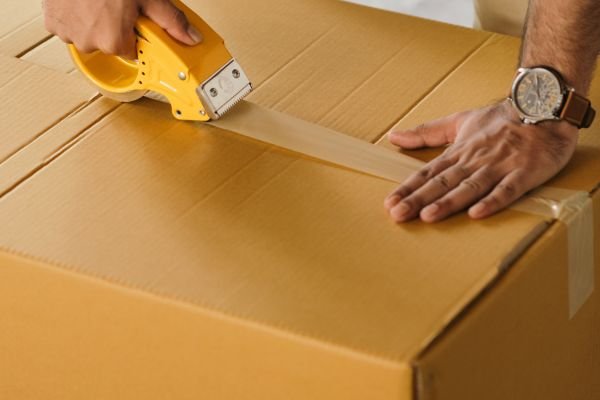For a gig, we often need to ship our amp ahead of us, and nothing can be worse than receiving a damaged amp after spending hefty shipping fees. From broken corners to damaged tubes, there are a lot of ways a guitar amp might get damaged. So you can receive the amp in the best shape the next time you ship it, I’ve compiled a list of tips and hacks on how to ship a guitar amp.
How To Ship A Guitar Amp: Tips and Hacks
Here are some essential tips and tricks on how to ship a guitar amp properly so that it doesn’t get damaged in transit.
Choose the Right Carrier
When you’re shipping a guitar or amp, be careful to choose a reliable shipping company with experience in shipping instruments and accessories. How to figure out if the company is reliable? Just go through the reviews, check their website, and ask people about their reputation before deciding. Companies like UPS, FedEx, and USPS are more reliable, although they will charge a bit higher.
Another thing you can do is purchase shipping insurance for added protection. It’ll give you peace of mind, and you’ll be covered if anything goes wrong.

Remove Loose Parts and Accessories
Before shipping your guitar amp, consider removing any loose parts and accessories, such as the power cord and cables, so they won’t move around and damage your amp during transit. If the tube sockets in your guitar amp are even slightly loose, it’s better to take the tubes out. Then, pack these items separately in a bag and place them in the box with your amp properly. It will prevent damage to the amp’s jacks or controls during shipping.
Pack Your Amp Securely
First things first, you’ll need a sturdy box that can handle the weight of your amp. Once you’ve sorted that, it’s time to think about padding. You’ll want at least 2 inches of padding with bubble wrap or packing peanuts to ensure your amp doesn’t move within the box. Fill up space densely in the box to keep your amp safe in transit.

Timing is Important
It may sound silly, but it’s not. When it comes to shipping your guitar amp, timing is important. You definitely want to avoid shipping it during extreme weather conditions. Why, you ask? Well, extreme temperatures and humidity can cause some serious damage to your beloved amp. So, if you’re getting ready to send off your amp, make sure you check the weather forecast and plan accordingly.
Label Your Package Clearly
Finally, make sure to label your package clearly and correctly. Include the recipient’s name, address, and phone number on the outside of the box. Also, label the box as “fragile” or “handle with care” to alert the carrier.
Cheapest Way To Ship A Guitar Amp
The most affordable shipping option for your amp will depend on various factors, such as the size and weight of your amp, the destination it’s going to, and the shipping method you choose.
However, you can use a shipping aggregator such as Shippo or ShipStation. These services allow you to compare rates from different carriers, including USPS, UPS, and FedEx, to find the most affordable option. They also offer discounts on shipping rates, which can save you even more money.
Related Post: How To Ship A Guitar In A Gig Bag
Also, you can try using a peer-to-peer shipping service such as Roadie or CitizenShipper. They will find people who are already traveling to your destination and are willing to transport your amp for a lower cost than traditional shipping carriers. Although this option may take a little more coordination, it is a way to save money.

How Much Does It Cost To Ship An Amp?
We already know that the cost of shipping your amp can vary depending on a few factors, such as the size, weight, and distance it needs to travel. Typically, if you’re shipping the amp within the United States, you can expect to pay anywhere between $30 and $50. Of course, these are just ballpark estimates, and the actual cost may differ based on your specific situation.
Can You Bring An Amp On A Plane?
Whether you can bring an amp on a plane or not depends on the size and weight of your amp. If it’s on the smaller side, like a practice amp, you can likely bring it on the plane as a carry-on item. But if it’s larger, like a full-size amp head and cabinet, you’ll likely need to check it in as baggage.
So, checking your airline’s baggage policy and restrictions beforehand is a good idea. Some airlines have specific rules about traveling with musical instruments and equipment, including amplifiers. Knowing the rules in advance will help you avoid any surprises or headaches at the airport.
How To Ship a Guitar Amp: Final Words
Shipping your precious guitar amp doesn’t have to be a nightmare! Following the tips on how to ship a guitar amp properly, you can confidently send your beloved amp off into the world, knowing it will arrive safe and sound. One last piece of advice, proper packaging is the key to shipping a guitar amp safely and securely.
